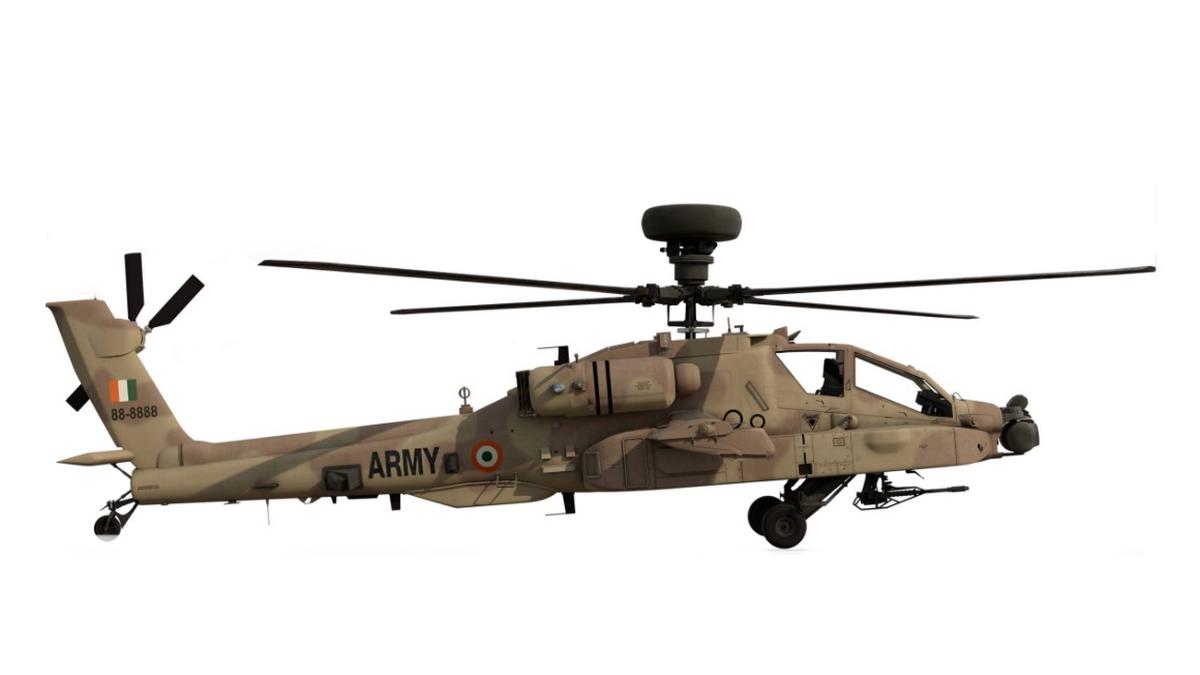SOURCE: IDRW.ORG

Fifteen months after raising its inaugural Apache attack helicopter squadron at Nagtalao, Jodhpur, in March 2024, the Indian Army’s Aviation Corps remains non-operational, awaiting the delivery of six Boeing AH-64E Apache helicopters from the United States. Signed in February 2020 as part of a $600 million deal, the acquisition was intended to bolster the Army’s air assault capabilities, particularly along the volatile western front with Pakistan.
However, repeated delays—initially from May–June 2024 to December 2024, and now with no clear timeline—have left the 451 Aviation Squadron idle, raising concerns about operational readiness amid ongoing border tensions. This article explores the causes of the delays, their impact on the Indian Army, and the broader implications for India’s defense modernization under the Aatmanirbhar Bharat initiative.
The AH-64E Apache, often dubbed the “world’s most advanced multi-role combat helicopter,” is a cornerstone of modern attack aviation. Equipped with the Longbow Fire Control Radar, AGM-114 Hellfire missiles, Hydra 70 rocket pods, and a 30mm M230 chain gun, the AH-64E offers unmatched agility, firepower, and survivability. Tailored for India’s unique terrain, the helicopters feature advanced electronic warfare systems, cutting-edge sensor suites, and enhanced composite rotor blades, making them ideal for operations in desert and high-altitude environments.
The Indian Army’s order for six Apaches, valued at approximately ?4,100 crore ($600 million), was intended to complement the Indian Air Force’s (IAF) fleet of 22 AH-64Es, inducted between 2019 and 2021 under a separate $3.1 billion deal signed in 2015. The Army’s Apaches are slated for deployment in the desert sector near the India-Pakistan border, enhancing offensive and reconnaissance capabilities against armored threats, a critical need following Operation Sindoor in May 2025. The 451 Aviation Squadron, raised in Jodhpur, was established to operate these helicopters, with pilots and ground crew already trained in the U.S., ready to integrate the Apaches into the Army’s Aviation Corps.
The original delivery schedule, outlined in the 2020 agreement, projected the arrival of the first batch of three Apaches by May–June 2024, with the remaining three to follow by July 2024. However, Boeing cited supply chain disruptions, exacerbated by global defense industry challenges, as the reason for pushing the timeline to December 2024. Even this revised deadline has lapsed, with no helicopters delivered as of June 11, 2025. Sources within the Indian Ministry of Defence attribute the ongoing delays to technical issues on the U.S. side, specifically concerns over electrical power generator failures that could lead to hazardous cockpit smoke accumulation, prompting Boeing to halt all AH-64E deliveries for additional testing.
Further complicating matters, India’s low ranking in the U.S. Defense Priorities and Allocations Systems Program (DPAS), which prioritizes critical components like engines and gearboxes, initially delayed progress. While this issue was resolved in April–May 2024 after diplomatic interventions, lingering supply chain bottlenecks and Boeing’s internal testing requirements continue to stall deliveries. Estimates now suggest the first batch may not arrive until July 2025, with the remaining three following three to four months later, marking a delay of over a year from the original schedule.
The prolonged delays have left the 451 Aviation Squadron non-operational, with trained pilots and ground personnel grounded despite completing rigorous training in the U.S. This setback is particularly acute given the strategic importance of the Apaches for operations along the western front, where tensions with Pakistan remain high post-Operation Sindoor. The helicopters were expected to provide precise air support, anti-tank capabilities, and reconnaissance, complementing the Army’s existing fleet of indigenous Advanced Light Helicopters (ALH) Dhruv, weaponized Rudra helicopters, and the Light Combat Helicopter (LCH) Prachand.
The Indian Air Force’s 22 Apaches, deployed in Pathankot and Jorhat, have already proven their value, with operations in Ladakh and Arunachal Pradesh along the Line of Actual Control (LAC) with China. However, the Army’s distinct operational needs, focused on armored warfare in desert terrain, make the delayed induction a critical gap. The IAF’s Apaches cannot fully substitute for the Army’s requirements, as the latter’s squadron is tailored for close coordination with ground formations. The delay also risks disrupting training schedules and crew proficiency, potentially requiring refresher courses once deliveries commence.
The delays stem partly from safety concerns raised by recent U.S. Army Apache crashes, which identified potential electrical power generator failures. These failures, linked to cockpit smoke hazards, prompted Boeing to impose a delivery hold until rigorous testing validates fixes. While this prioritization of safety is commendable, it underscores broader challenges in Boeing’s quality control, as highlighted by X users who criticized the company’s track record, with one noting, “First delayed in delivering 6 choppers & now this issue. They need to focus more on quality control rather than Chai-Samosa.” The U.S. Army’s own data indicates that 13% of Apache mishaps are due to mechanical failures, reinforcing the need for thorough testing.
The delays stem partly from safety concerns raised by recent U.S. Army Apache crashes, which identified potential electrical power generator failures. These failures, linked to cockpit smoke hazards, prompted Boeing to impose a delivery hold until rigorous testing validates fixes. While this prioritization of safety is commendable, it underscores broader challenges in Boeing’s quality control, as highlighted by X users who criticized the company’s track record, with one noting, “First delayed in delivering 6 choppers & now this issue. They need to focus more on quality control rather than Chai-Samosa.” The U.S. Army’s own data indicates that 13% of Apache mishaps are due to mechanical failures, reinforcing the need for thorough testing.
The Indian Army, while frustrated, has acknowledged the necessity of resolving these issues to ensure the reliability of the $600 million investment. The absence of penalty clauses in the contract, as noted by industry observers, limits India’s leverage to expedite deliveries, raising questions about accountability in high-stakes defense deals.
NOTE : Article cannot be reproduced without written permission of idrw.org in any form even for YouTube Videos to avoid Copy right strikes. Websites doing illegal reproductions will get DMCA and Legal Notices.